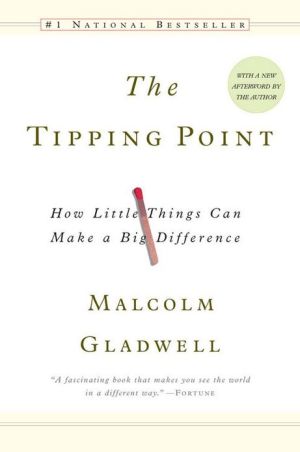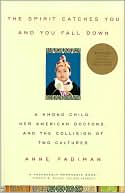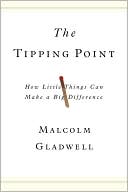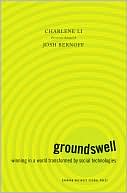Communication for Nurses, Second Edition: Talking with Patients
Communication for Nurses offers direct, effective techniques that are delivered in a concise, user-friendly format that enables readers to develop a professional communication style. Topics include nursing, communication, and developmental theories; issues of cultural diversity and patient rights; concepts and interviewing techniques are presented for starting and developing the nurse-patient relationship; communicating with specific groups, including patients of different ages, patients with...
Search in google:
Communication for Nurses offers direct, effective techniques that are delivered in a concise, user-friendly format that enables readers to develop a professional communication style. Doody Review Services Reviewer:Sandy Forrest, PhD(Walden University)Description:This is a clear and concise review of critical communication skills nurses use in the clinical setting when interacting with patients, families, peers, and other healthcare providers. The author integrates nursing theory, cultural diversity, professional standards, ethical, and legal considerations as a base for effective communication processes. Purpose:One purpose of the book is to examine ethical, legal, and professional guidelines for communication as a facet of nursing care. Another is to explore communication techniques used with specific populations. Yet another is to assess useful methods of communicating with compassion and empathy. The book meets these objectives and provides nurses with a much needed reference to enhance their communication processes in healthcare environments.Audience:The book can be used effectively by nursing students, nurses new to the profession, and experienced clinicians. The author continues her research on patient-provider communication and how the quality of these processes affects nursing care delivery.Features:This is a review of effective communication processes as an integral component of the nurse-patient relationship. Communicating with peers and other healthcare providers is addressed. Experienced nurses can gain an increased understanding of the critical need for promoting professional autonomy in a caring and compassionate manner. Communication processes used with special populations and in conflict situations are examined. Each chapter incorporates a case study and includes activities that can be used to encourage further dialogue and critical thinking. Assessment:The author presents a clear, concise, and scholarly review of the need for effective communication in clinical environments. The integration of current empirical findings enhances the overall quality of the book. The revised edition highlights current Internet resources and updated references.
Sect. I Setting the Stage for Effective Communication1 The First Encounter 32 The Nurse as a Person: Theories of Self and Nursing 113 Patients as People: Standards to Guide Communication 274 Cultural Diversity: Awareness and Respect 41Sect. II The Nurse-Patient Relationship5 Establishing a Therapeutic Relationship 516 Interviewing Skills: A Clinical Art and Science 677 Reading Nonverbal Cues and Body Language 878 Humor 97Sect. III Communicating with Specific Groups9 Anger, Anxiety, and Difficult Communication Styles 10510 Life-Threatening Illness: Communication When Time Is Limited 12511 Patients with Pain 13312 Physical Impairments to Communication 14113 Communicating with Different Age Groups and Families 149Sect. IV Communicating with Other Healthcare Provides14 Communicating with Peers and Other Healthcare Providers 16115 Conflict Resolution and Negotiation Skills 171Sect. V Conclusion16 A Conclusion and a Beginning 183Bibliography 187Index 193
\ Reviewer: Sandy Forrest, PhD(Walden University)\ Description: This is a clear and concise review of critical communication skills nurses use in the clinical setting when interacting with patients, families, peers, and other healthcare providers. The author integrates nursing theory, cultural diversity, professional standards, ethical, and legal considerations as a base for effective communication processes. \ Purpose: One purpose of the book is to examine ethical, legal, and professional guidelines for communication as a facet of nursing care. Another is to explore communication techniques used with specific populations. Yet another is to assess useful methods of communicating with compassion and empathy. The book meets these objectives and provides nurses with a much needed reference to enhance their communication processes in healthcare environments.\ Audience: The book can be used effectively by nursing students, nurses new to the profession, and experienced clinicians. The author continues her research on patient-provider communication and how the quality of these processes affects nursing care delivery.\ Features: This is a review of effective communication processes as an integral component of the nurse-patient relationship. Communicating with peers and other healthcare providers is addressed. Experienced nurses can gain an increased understanding of the critical need for promoting professional autonomy in a caring and compassionate manner. Communication processes used with special populations and in conflict situations are examined. Each chapter incorporates a case study and includes activities that can be used to encourage further dialogue and critical thinking. \ Assessment: The author presents a clear, concise, and scholarly review of the need for effective communication in clinical environments. The integration of current empirical findings enhances the overall quality of the book. The revised edition highlights current Internet resources and updated references.\ \ \ \ \ Reviewer: Sandy Forrest, PhD(Walden University) \ Description: This is a clear and concise review of critical communication skills nurses use in the clinical setting when interacting with patients, families, peers, and other healthcare providers. The author integrates nursing theory, cultural diversity, professional standards, ethical, and legal considerations as a base for effective communication processes. \ Purpose: One purpose of the book is to examine ethical, legal, and professional guidelines for communication as a facet of nursing care. Another is to explore communication techniques used with specific populations. Yet another is to assess useful methods of communicating with compassion and empathy. The book meets these objectives and provides nurses with a much needed reference to enhance their communication processes in healthcare environments.\ Audience: The book can be used effectively by nursing students, nurses new to the profession, and experienced clinicians. The author continues her research on patient-provider communication and how the quality of these processes affects nursing care delivery.\ Features: This is a review of effective communication processes as an integral component of the nurse-patient relationship. Communicating with peers and other healthcare providers is addressed. Experienced nurses can gain an increased understanding of the critical need for promoting professional autonomy in a caring and compassionate manner. Communication processes used with special populations and in conflict situations are examined. Each chapter incorporates a case study and includes activities that can be used to encourage further dialogue and critical thinking. \ Assessment: The author presents a clear, concise, and scholarly review of the need for effective communication in clinical environments. The integration of current empirical findings enhances the overall quality of the book. The revised edition highlights current Internet resources and updated references.\ \ \ 3 Stars from Doody\ \








